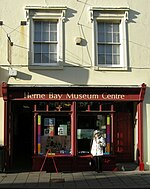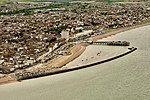Herne and Broomfield
City of CanterburyCivil parishes in KentKent geography stubs
Herne and Broomfield is a civil parish and electoral ward within the City of Canterbury. The parish is situated to the north of Canterbury in Kent. The seaside town of Herne Bay is the other side of the A299 road, Thanet Way that marks the northern boundary of the parish. Greenhill, part of Herne Bay, lies to the west, the parishes of Hoath and Chislet are to the east and Sturry parish is to the South. The village of Herne and the now merged hamlet of Broomfield have both expanded greatly over recent years and between them have a population of over 8,000 people. The original Micropub, The Butchers Arms, opened in Herne in 2005.
Excerpt from the Wikipedia article Herne and Broomfield (License: CC BY-SA 3.0, Authors).Herne and Broomfield
Herne Street, Canterbury Lower Herne
Geographical coordinates (GPS) Address Nearby Places Show on map
Geographical coordinates (GPS)
| Latitude | Longitude |
|---|---|
| N 51.3492 ° | E 1.1331 ° |
Address
Herne Street
Herne Street
CT6 7JD Canterbury, Lower Herne
England, United Kingdom
Open on Google Maps








